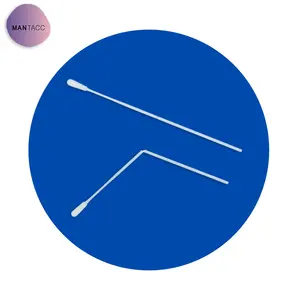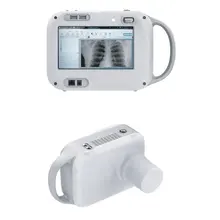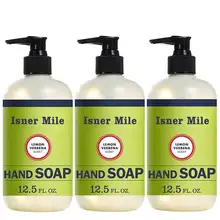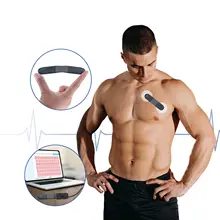The expression needle for biopsy refers to a sophisticated medical device crafted for the extraction of tissue specimens from the body to aid in diagnosis. These biopsy needles are pivotal in the realm of medical diagnostics, facilitating the analysis of tissue from organs like the thyroid, liver, and breast to identify afflictions such as cancer. Alibaba.com boasts an extensive selection of biopsy needles appropriate for a variety of medical interventions.
Types and Characteristics of Biopsy Needles
Biopsy needles encompass a range of subtypes, each engineered with distinct features to meet particular diagnostic needs. The core needle biopsy is a prevalent variant, intended to extract a cylindrical tissue sample. The tru cut biopsy needle, a specialized form, excels in this task with its precision cutting edge that secures a pristine sample. For more sensitive procedures, such as thyroid interventions, fine needle aspiration (FNA) biopsy needles, including fna thyroid and fine needle biopsy thyroid needles, are preferred for their accuracy and minimal tissue disturbance. Conversely, the jamshidi needle, a sturdier and larger tool, is typically utilized for bone marrow extractions. Each needle is crafted with consideration for the specific consistency of the tissue and the sampling requirements, ensuring the extraction of the most precise and representative tissue sample for examination.
Structure and Operation of Biopsy Needles
The architecture of a needle for biopsy is intricately designed to optimize its functionality. A standard core needle biopsy needle comprises an external cannula with a pointed tip to penetrate the skin and an internal stylet equipped with a cutting edge to harvest the tissue sample. During the biopsy, the needle is introduced into the targeted site, followed by the advancement of the stylet to slice and secure the tissue within the needle's lumen. This configuration permits the collection of multiple samples through a single incision, diminishing patient distress and shortening the duration of the procedure. The fna biopsy needle, being slender and more pliable, operates on a different principle, employing a syringe to generate suction and draw cells and fluid into the needle for cytological analysis.
Materials and Properties of Biopsy Needles
The selection of materials for fabricating biopsy needles, such as stainless steel, polymers, and specialized fibers, is informed by their resilience, pliability, and biocompatibility. Stainless steel is predominantly used for its robustness and corrosion resistance, essential for preserving the needle's sharpness and sterility. Polymers and bamboo fibers may be incorporated into the needle's handle or non-tissue-contacting components, offering an ergonomic and lightweight design that mitigates hand fatigue during extended procedures.
Business Usages and Applications of Biopsy Needles
Biopsy needles are indispensable in the healthcare sector, employed across hospitals, clinics, and laboratories for diagnostic evaluations. In the field of oncology, needle biopsy breast techniques are vital for the detection of breast cancer. Endocrinologists rely on thyroid fine needle biopsies to assess thyroid nodules and ascertain their nature. These instruments are equally crucial in research environments, where they facilitate the collection of specimens for scientific study, thereby contributing to medical progress and the innovation of novel therapies.
Functions and Tasks of Biopsy Needles
The principal role of a needle for biopsy is to harvest tissue specimens with precision. The core needle biopsy needle is specifically fashioned to procure a core of tissue, indispensable for histopathological scrutiny. Conversely, the fna biopsy needle is applied in less invasive contexts, gathering cellular samples for cytological evaluation. These needles empower clinicians to conduct biopsies with minimal risk and discomfort for the patient, while also guaranteeing the acquisition of adequate tissue for an accurate diagnosis.
Features and Unique Selling Points
Alibaba.com's biopsy needles are distinguished by their cutting-edge features. Certain needles are equipped with a coaxial system, enabling the retrieval of multiple specimens through a solitary puncture. Others boast echogenic enhancements to improve ultrasound visibility during the procedure. These distinctive attributes differentiate them from competitors, providing medical practitioners with tools that are not only efficacious but also innovative and user-friendly.
Benefits and Positive Outcomes
Employing the appropriate needle for biopsy yields manifold advantages. It guarantees precise diagnoses, curtails the necessity for repeated interventions, and alleviates patient discomfort. For healthcare providers, the efficacy and dependability of these needles translate into enhanced patient results and a more efficient workflow, ultimately elevating the standard of care.
How to Use, Choose, Clean, Maintain, and Install Biopsy Needles
Proficient use of a biopsy needle demands an understanding of its mechanism and adept handling. For example, operating a core needle biopsy needle necessitates familiarity with the activation of its cutting feature to secure the tissue specimen. Selecting the appropriate needle hinges on the procedural prerequisites, such as the dimension and location of the target tissue. Cleaning and maintenance are imperative for patient safety, with most needles requiring sterilization post-use. While installation is generally not pertinent to biopsy needles, ensuring their correct assembly and connection to any biopsy guns or syringes is crucial for their optimal performance.
Target Audience and Meeting Needs
The intended audience for various biopsy needles encompasses medical experts in fields like oncology, endocrinology, and pathology. Each needle type is devised to cater to the specific requirements and preferences of these professionals, assuring the availability of the correct instrument for each medical procedure. For instance, a jamshidi needle is designed for hematologists conducting bone marrow biopsies, whereas a fine needle biopsy thyroid needle is optimal for endocrinologists examining thyroid nodules.
What are the considerations for selecting a biopsy needle for specific procedures?
In choosing a biopsy needle, factors such as the invasiveness of the procedure, the requisite size of the tissue sample, and the particular organ targeted for sampling must be considered. A core needle biopsy needle is often preferred for breast tissue owing to its capacity to obtain a substantial specimen for histological analysis, while an fna biopsy needle is better suited for a less invasive cytological sample from the thyroid.
How does the choice of biopsy needle impact the accuracy of the diagnosis?
The selection of a biopsy needle can profoundly influence the precision of the diagnosis. An excessively large needle may inflict unwarranted damage, whereas a needle that is too small might fail to collect a sufficient sample. For instance, a fine needle biopsy thyroid procedure necessitates a needle that can precisely sample the thyroid without compromising adjacent tissues, thereby ensuring an accurate diagnosis.
What are the best practices for ensuring patient safety during a biopsy?
To ensure patient safety during a biopsy, it is best to utilize needles that conform to safety standards, such as those with quality certification and the correct instrument classification. Moreover, medical professionals should adhere to stringent sterilization protocols and opt for the least invasive needle feasible, like a jamshidi needle for bone marrow sampling, to minimize patient risk.






























 浙公网安备 33010002000092号
浙公网安备 33010002000092号 浙B2-20120091-4
浙B2-20120091-4